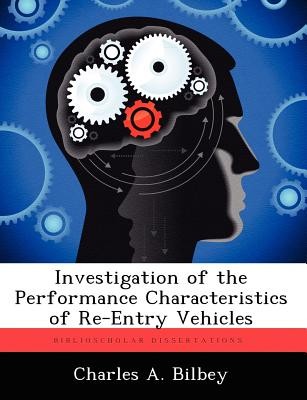
- We will send in 10–14 business days.
- Author: Charles A Bilbey
- Publisher: BiblioScholar
- ISBN-10: 124958681X
- ISBN-13: 9781249586814
- Format: 18.9 x 24.6 x 0.5 cm, softcover
- Language: English
- SAVE -10% with code: EXTRA
Investigation of the Performance Characteristics of Re-Entry Vehicles (e-book) (used book) | bookbook.eu
Reviews
Description
When a non-US spacecraft reenters the Earth's atmosphere, having the ability to accurately determine its performance characteristics is a primary concern. This study investigated the atmospheric re-entry profiles of a maneuverable re-entry vehicle. The re-entry vehicle was modeled as a point mass with aerodynamic properties. Equations of motion were numerically integrated, giving the time histories of position, velocity and flight path angle. The algorithm is able to generate a complete and feasible entry trajectory of approximately 25-minute flight time in about 5 to 10 seconds on a desktop computer, given the entry conditions and values of constraint parameters. This preliminary study shows the feasibility of identifying and further exploring the technical challenges involved in using a mathematical model to simulate the performance characteristics of the maneuvering re-entry vehicle.
EXTRA 10 % discount with code: EXTRA
The promotion ends in 18d.21:40:32
The discount code is valid when purchasing from 10 €. Discounts do not stack.
- Author: Charles A Bilbey
- Publisher: BiblioScholar
- ISBN-10: 124958681X
- ISBN-13: 9781249586814
- Format: 18.9 x 24.6 x 0.5 cm, softcover
- Language: English English
When a non-US spacecraft reenters the Earth's atmosphere, having the ability to accurately determine its performance characteristics is a primary concern. This study investigated the atmospheric re-entry profiles of a maneuverable re-entry vehicle. The re-entry vehicle was modeled as a point mass with aerodynamic properties. Equations of motion were numerically integrated, giving the time histories of position, velocity and flight path angle. The algorithm is able to generate a complete and feasible entry trajectory of approximately 25-minute flight time in about 5 to 10 seconds on a desktop computer, given the entry conditions and values of constraint parameters. This preliminary study shows the feasibility of identifying and further exploring the technical challenges involved in using a mathematical model to simulate the performance characteristics of the maneuvering re-entry vehicle.


Reviews